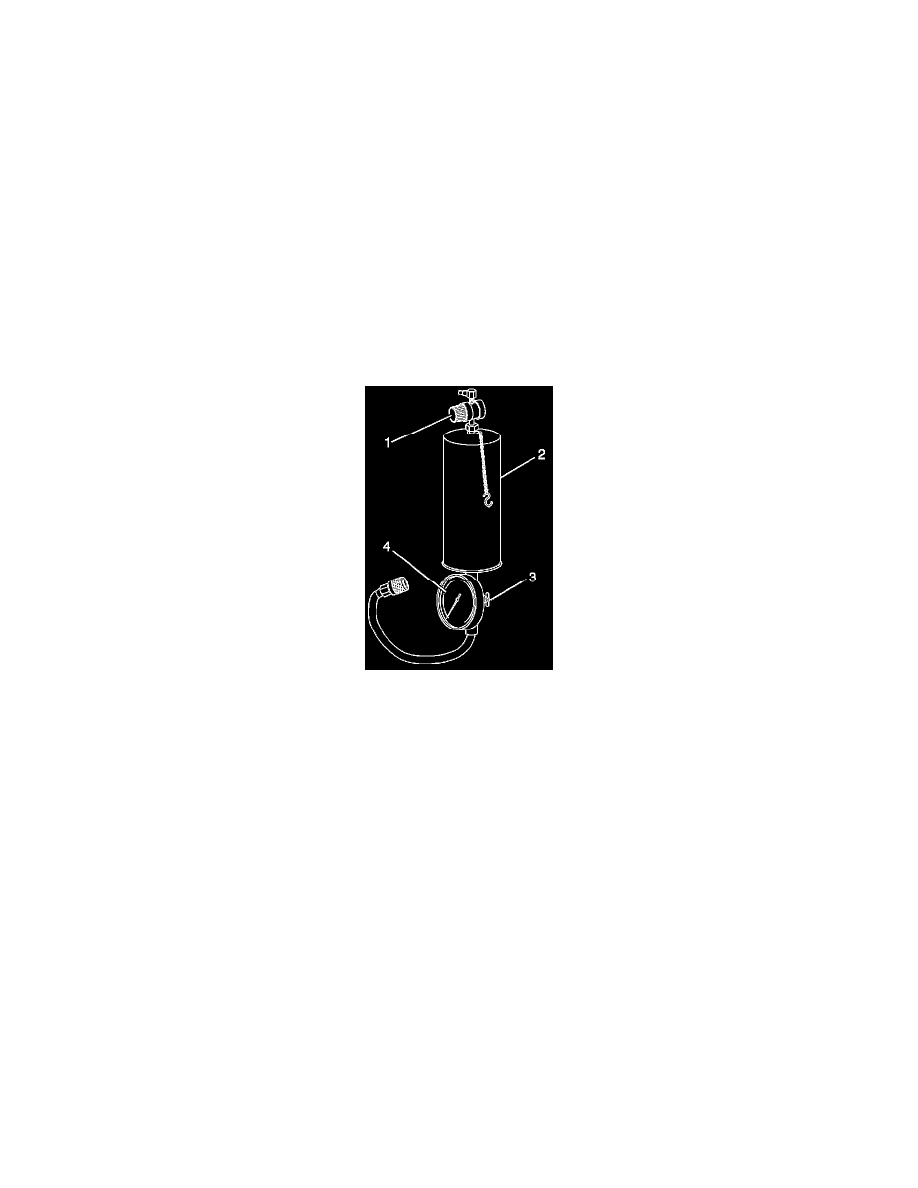K 1500 Suburban 4WD V8-4.8L VIN V (2003)

Fuel Injector: Service and Repair
Fuel Injector Cleaning Procedure
TOOLS REQUIRED
-
J 38500-A Fuel Injector Cleaner
-
J 37287 Fuel Line Shut-Off Adapters (Cars and Trucks not listed below)
-
J 42964-1 3/8 Fuel Line Shut-Off Adapter (S/T Trucks, G Van)
-
J 42964-2 5/16 Fuel Line Shut-Off Adapter (S/T Trucks, G Van)
-
J 42873-1 3/8 Fuel Line Shut-Off Adapter (C/K Trucks)
-
J 42873-2 5/16 Fuel Line Shut-Off Adapter (C/K Trucks)
IMPORTANT:GM Top Engine Cleaner is the only injector cleaning agent recommended. Do not us other cleaning agents, as they may contain
methanol which can damage fuel system components.
Under NO circumstances should the top engine cleaner be added to the vehicle's fuel tank, as it may damage the fuel pump and other
system components.
Do not exceed a 10% cleaning solution concentration. Higher concentrations may damage fuel system components. Testing has
demonstrated that exceeding the 10% cleaning solution concentration does not improve the effectiveness of this procedure.
During this procedure you will need a total of 960 ml (32.4 oz) of cleaning solution. That is two tanks of solution for the J 38500-A.
Other brands of tools may have a different capacity and would therefore require more or less tanks to complete the procedure. You must
use all 960 ml (32.4 oz) of solution to insure complete injector cleaning.
1. Obtain J 38500-A (2).
IMPORTANT:Make sure the valve at the bottom of the canister (3) is closed.
2. For U.S. dealers, empty 2 pre-measured GM Top-Engine Cleaner containers, 24 ml (0.812 oz) each, P/N 12346535, into the J 38500-A.
3. For Canadian dealers, measure and dispense 48 ml (1.62 oz) of Top-Engine Cleaner, P/N 992872, into the J 38500-A.
4. If you are using any other brand of tank you will need a total of 96 ml (3.24 oz) of Top-Engine Cleaner mixed with 864 ml (29.16 oz) of regular
unleaded gasoline.
5. Fill the injector cleaning tank with regular unleaded gasoline. Be sure to follow all additional instructions provided with the tool.
6. Electrically disable the vehicle fuel pump by removing the fuel pump relay and disconnecting the oil pressure switch connector, if equipped.
7. Disconnect the fuel feed and return lines at the fuel rail. Plug the fuel feed and return lines coming off the fuel rail with J 37287 , or J 42964-1 ,
and J 42964-2 , or J 42873-1 and J 42873-2.
8. Connect the J 38500-A to the vehicle's fuel rail.
9. Pressurize the J 38500-A to 510 kPa (75 psi).
10. Start and idle the engine until it stalls, due to lack fuel. This should take approximately 15-20 minutes.
11. Disconnect J 38500-A from the fuel rail.
12. Reconnect the vehicle's fuel pump relay and oil pressure switch connector, if equipped.
13. Remove J 37287 , or J 42964-1 , and J 42964-2 , or J 42873-1 and J 42873-2 and reconnect the vehicle' s fuel feed and return lines.
14. Start and idle the vehicle for an additional 2 minutes to ensure residual injector cleaner is flushed from the fuel rail and fuel lines.
15. Repeat steps 1-5 of the Injector Balance Test See: Testing and Inspection/Fuel Injector Balance Test, and record the fuel pressure drop from each
injector.
16. Subtract the lowest fuel pressure drop from the highest fuel pressure drop. If the valve is 15 kPa (2 psi) or less, no additional action is required. If
the valve is greater than 15 kPa (2 psi), replace the injector with the lowest fuel pressure drop.
17. Add one ounce of Port Fuel Injector Cleaner, P/N 12345104 (Canadian P/N 10953467), to the vehicle's fuel tank for each gallon of gasoline
estimated to be in the fuel tank. Instruct the customer to add the reminder of the bottle of Port Fuel Injector Cleaner to the vehicle fuel tank at the
next fill-up.
18. Advise customer to change brands of fuel and to add GM Port Fuel Injector Cleaner every 3000 miles. GM Port Fuel Injector Cleaner is the same
